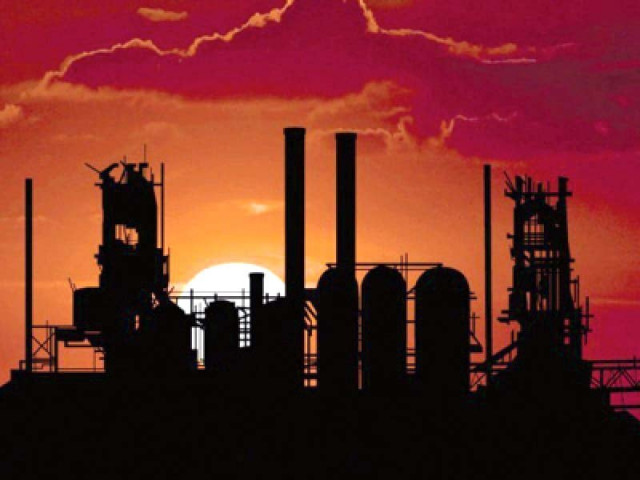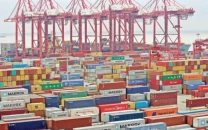Global developments and Pakistan
If Russia curtails oil and gas exports, Pakistan will also feel its impact

Russia’s invasion of Ukraine and the imminent hike in interest rates in the United States are likely to significantly impact Pakistan’s economy.
Moscow’s decision to move its troops into Ukraine and the retaliatory sanctions imposed by the western countries on Russian financial and government entities is fraught with serious geostrategic implications.
In the economic sphere, heightened inflationary pressures through a steep rise in commodity prices, particularly those of oil and wheat, is likely to be the most significant global fallout in the short run.
Russia is the globe’s second-biggest oil exporter and the top natural gas exporter. If because of European and American sanctions on Moscow or otherwise, Russia has to curtail its oil and gas exports, it will jack up fuel prices in the international market.
This will adversely impact not only the countries in Europe, which are heavily dependent on Russian energy supplies but also countries like Pakistan, which don’t rely on oil and gas imports from Russia.
Already both Brent crude oil and WTI crude oil have gone above $100 per barrel each, the highest since 2014.
World oil prices were on the rise even before the Ukraine invasion after a Covid-induced slump in 2020.
According to the US Energy Information Administration (EIA), average WTI crude and Brent crude prices rose from $39.17 per barrel and $41.69 per barrel respectively in 2020 to $68.21 per barrel and $70.89 per barrel respectively in 2021.
In January 2022, the average Brent price increased to $87 per barrel from $75 in December 2021. Likewise, in January 2022, the average WTI price increased to $83.22 per barrel from $71.71 in December 2021.
The major reason for the upward price movement has been the increase in global demand, as countries all over the world relaxed or removed travel restrictions. As always, the increase in oil prices will hit hard the oil importing countries and benefit the oil exporters.
There is, however, one key difference between the surge in oil prices before and after the attack on Ukraine.
The former represented the demand-side inflation, while the latter represents the supply-side inflation. Economists agree that the latter is far more problematic than the former.
In fact, the demand-side inflation may be benign in that it tends to drive up economic growth, while the supply-side inflation, which is due to supply shocks, drives down growth rate, resulting in stagflation — an unenviable combination of low growth and high prices.
Triple whammy
For Pakistan, the situation is a triple whammy. One, it will tend to drive up domestic oil prices, thus stoking inflationary pressures. After Rs12.03-per-litre increase in petrol prices in mid-February to Rs159.86 per litre, it was likely that the price would be further increased.
However, the government has announced that it will not pass on the hike in world oil prices to the people and instead slashed the petrol price by Rs10 with effect from March 1 and capped it until the end of current financial year.
Two, petroleum products are one of the biggest items in the import basket. In 2020-21, the petroleum products contributed $11.36 billion, or 20.14%, to the country’s total import bill.
Therefore, the increase in world fuel prices will inflate Pakistan’s import payments and trade and current account deficits.
According to the SBP, in first seven months of the current financial year, merchandise trade and current account deficits reached $25.12 billion and $11.58 billion respectively compared with $13.71 billion and $1.02 billion (in surplus) respectively during the corresponding period of previous financial year.
Before the Ukrainian crisis had erupted, the IMF had projected that the global economic growth will slow down to 4.4% in 2022 from 5.9% in 2021.
Global supply shocks and international sanctions on Russia are likely to further push down the world growth rate during the current year.
If that happens, a slowdown in global demand may make a downward impact on Pakistan’s exports. However, at this stage, it will be premature to project the actual impact as several variables are involved.
Another significant development, which is on the horizon, is a hike in interest rates in the US. Having contracted 3.4% in 2020 due to the pandemic, the US economy rebounded in 2021 and grew 6% (IMF data).
To ward off the economic impact of the pandemic, the Federal Reserve kept the benchmark interest rate close to zero during 2020 and 2021.
However, with the economy regaining momentum and inflation building, the Fed is likely to raise the interest rates this month or in the second quarter of 2022.
Since the US is the lynchpin of the global economic, financial and exchange rate systems, the changes in its interest rates will affect other countries as well.
If it comes about, an interest rate increase in the US will drive up the value of Pakistan’s external debt and rack up the cost of debt servicing. Already, recent months have witnessed a sharp depreciation of the rupee, which raised the dollar value of the country’s external debt.
Risk premium
Investors put their funds into developing countries’ markets, where risk is generally higher than that in developed economies, if they offer a higher rate of return.
Low interest rates in the US over the last two years had made it easier for developing countries to attract foreign portfolio investment (FPI).
During FY21, Pakistan received $2.76 billion in FPI, while during Jul-Jan FY22, the FPI reached $651 million.
However, in the wake of interest rate surge in the US, developing countries like Pakistan will have to offer higher interest rates plus risk premium to attract foreign capital.
In Pakistan, in the face of high inflation, the benchmark interest rate is already high at 9.75%. A further increase in interest rate will have both costs and benefits.
As the American dollar is the globe’s preferred medium of exchange, the greenback’s appreciation will raise commodity prices. As Pakistan is essentially a commodity exporter, the unit value of exports will increase.
The downside, however, is that the price increase may reduce the demand for non-oil commodities, such as cotton and rice, on which our export performance depends heavily.
On the other hand, the increase in oil prices will inflate our import bill. This impact on oil prices will be in addition to the one induced by the Ukraine situation.
The writer is an Islamabad-based columnist
Published in The Express Tribune, March 7th, 2022.
Like Business on Facebook, follow @TribuneBiz on Twitter to stay informed and join in the conversation.



















COMMENTS
Comments are moderated and generally will be posted if they are on-topic and not abusive.
For more information, please see our Comments FAQ